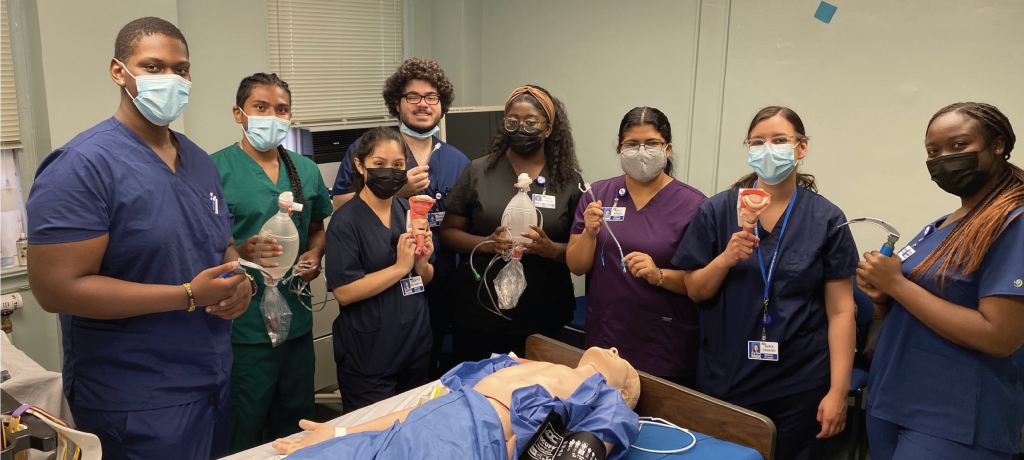By Sarah G. Jamison, MD

The Association of American Medical Colleges defines underrepresented minorities in medicine as “those racial and ethnic populations that are underrepresented in the medical profession relative to their numbers in the general population.”
The most current data shows that while White and Asian physicians make up an overwhelming 73.3% of all physicians that are active, Black, Hispanic, American Indian/Alaska Natives and Pacific Islanders are only a combined 11.2% of the physician workforce.
These statistics are clinically significant as multiple studies show that patient populations experience better healthcare outcomes when being cared for by healthcare professionals with similar racial and ethnic backgrounds as their own.
As the gatekeeper to one of the leading healthcare centers in the racially diverse community of the Bronx, SBH’s Department of Emergency Medicine has made an unwavering commitment to actively recruit underrepresented minorities (URM) in medicine through establishing pipeline programs at the elementary, secondary, undergraduate, and medical school levels. These pipeline programs will (at its most fundamental level) expose URM students to various careers and concepts in healthcare, and (at its most functional level) increase their presence within the specialty of emergency medicine and most specifically, our residency program.
As such, the department successfully launched its pilot pipeline project in the form of the Summer Enrichment and Mentorship Program (SEMP) in June 2021. SEMP was a six-week introductory emergency medicine course for eight rising second year medical school students from various allopathic and osteopathic medical schools in New York City.
The core facets of the program saw participants take part in didactic lectures, procedural workshops, simulated patient encounter sessions, ultrasound modules, journal club, social medicine initiatives, meetings with department leadership, and an outing to the world-famous Bronx Zoo. Each student was also given both a faculty and resident preceptor whom they shadowed on various shifts throughout the department and gained firsthand exposure to a wide breadth of clinical pathology and acuity in the culturally diverse population provided by the South Bronx.
And while SEMP ensured a solid clinical and academic foundation to its students, the crown jewel of the program was its mentorship component. Each student was assigned a faculty mentor who advised them one-on-one during the duration of the program. These mentorship pairings gave SEMP participants (all of whom will become the first physicians in their family) a guide to help navigate life as a doctor not only inside, but also outside of the hospital.
As Jason Morency, a CUNY School of Medicine student, wrote in his application essay, “An aspect of the SBH Emergency Medicine SEMP program that I admire the most, is the encouragement and opportunity for students in underrepresented racial groups with little experience in the emergency medicine field to gain knowledge through a diverse set of activities, including hands-on experience.”
SEMP participant Sofia Cedeno, who attends Touro College of Osteopathic Medicine, says, “During the few clinical shifts that I had during the first year of medical school, most of my facilitators did not look like me and I did not think much of it because that’s how it’s always been. But seeing myself represented makes such a difference and I have been inspired to be more active in my school and pay it forward for incoming URM students.”
The SBH Emergency Department plans to expand the SEMP programing and participation next summer, and even hopes to involve other specialties at SBH. Until then, plans to extend our pipeline program to local intermediate schools in the surrounding area are underway.
It is daunting when one considers the many disparities that contribute to the healthcare equity gap, However, by making strides such as the Summer Enrichment and Mentorship Program, SBH is one step closer, if even a small one, to improving and making a difference.




